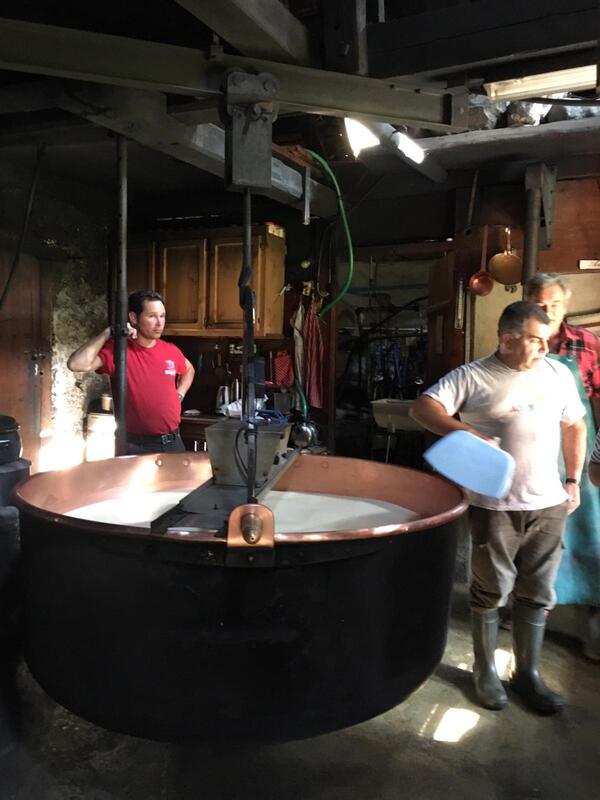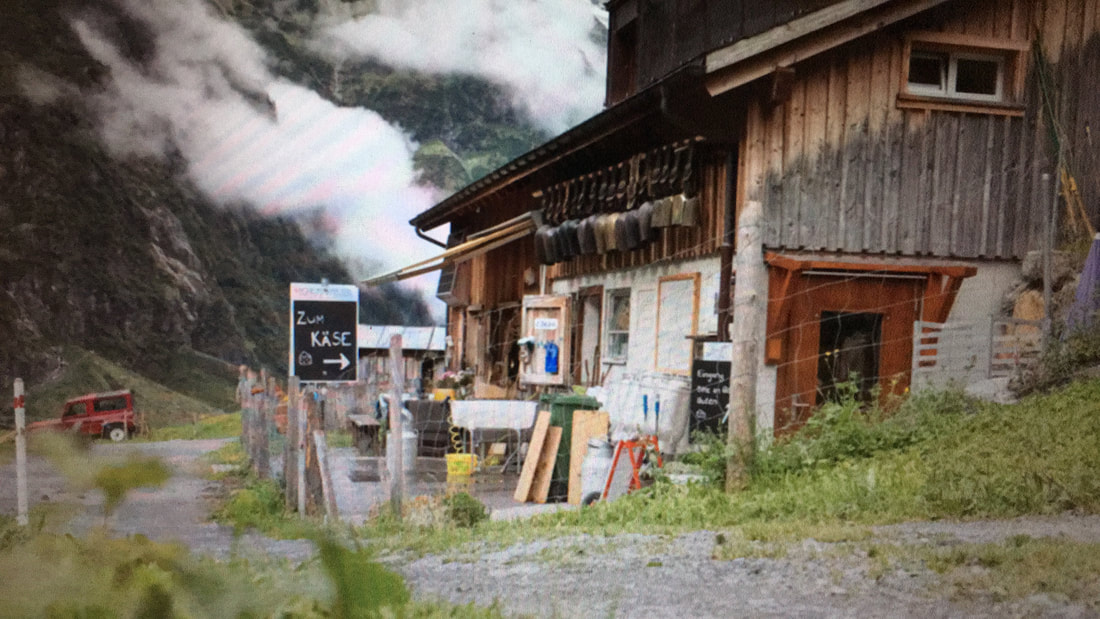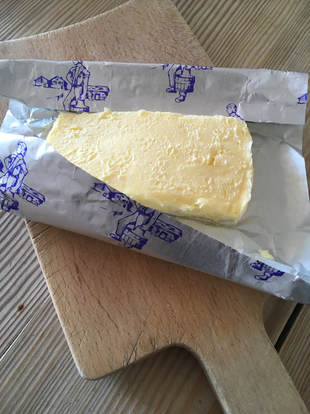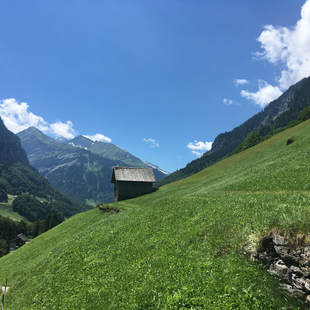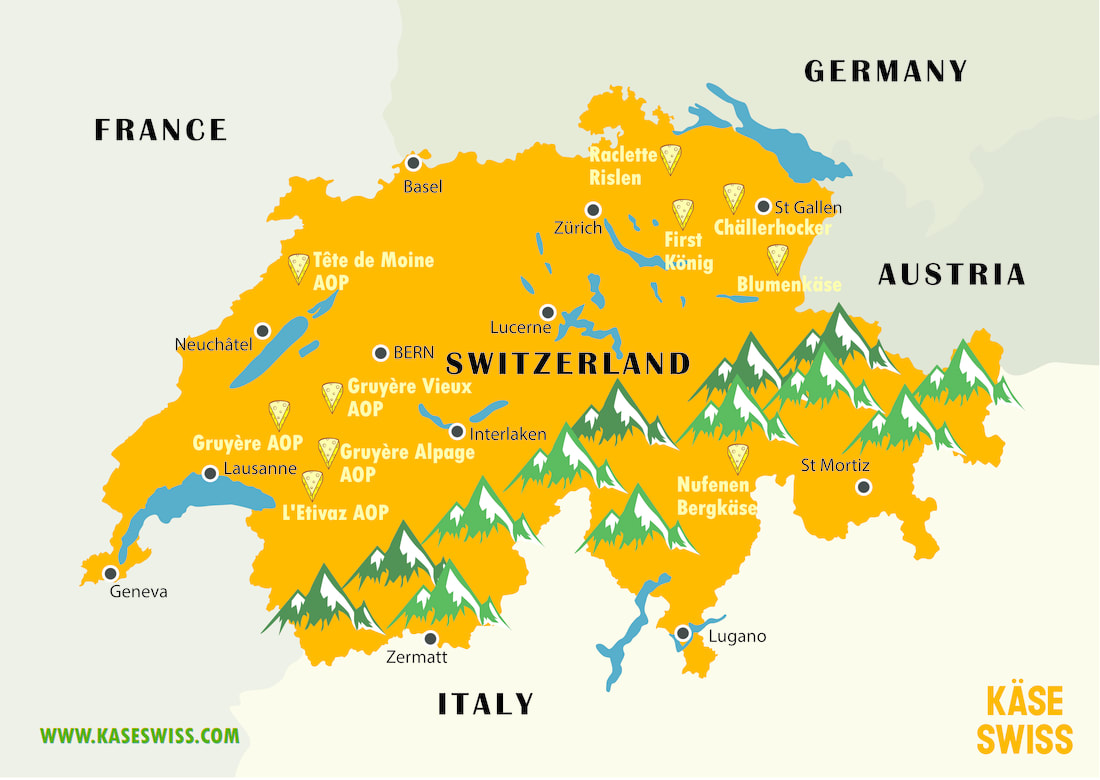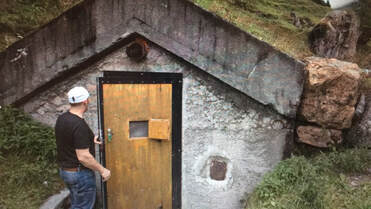A new initiative from KäseswissDiscover a unique range of cheeses created high in the Alps. Here at this altitude, farmers graze small herds of animals on lush summer pastures and craft cheese using traditional methods. Characterised by intricate flavours resulting from the diverse plants of the meadows the animals graze on, each cheese in this special selection is a true expression of its mountainside origins. What makes Natural Alpine Cheese unique - A high altitude creation Natural Alpine Cheese is made possible by a special combination of environment, animals, and people. Beneath the winter snows of the high Alps lies an underlay rich with life, patiently waiting for its moment in the sun. As snows recede in spring, mountain farmers journey with their animals high into the Alps to take advantage of the brief but intense burst of growth. For a few short months, small herds can be found dotted across the steep slopes, grazing on lush summer meadows alive with an incredible array of plants. The animals grazing in this environment produce fragrant alpine milk which is used to make cheese right there on the mountainside. Housed in traditional chalets, farmers make cheese using copper vats over open wood fires, following methods from centuries gone by. Living conditions are tough, days are long, work is done by hand but every farmer we meet loves to be there nonetheless. Each year we visit them to share a moment and taste their production. Our selection brings together cheese that is truly unique to place and time. Selection by Hand We have developed our own rigorous selection criteria, that ensure our Natural Alpine Cheeses represent the best of the craft. We only include cheeses that are:
Good cheese starts with grass The unique combination of climate, soil conditions and sun exposure of the Alps have created an extraordinary biodiversity of plants which flourish in the warmer months. What looks like a simple summer meadow is in fact a complex ecosystem that has been nurtured over the centuries by traditional pastoral and agricultural activities. There can be over 100 different varieties of plants above 1400 metres. Animals dine on this plethora of grasses, flowers and other species and it is this diversity of diet that leads to such a special cheese that captures the flavour of its mountain terroir. A product of contented animals and pure, raw milk Alpine cheesemakers continue the legacy of their family traditions, following Alpine farming practices and ethical animal husbandry. Summertime for animals on the Alp is a time of enjoyment and relaxation. Grass-fed, they move across the slopes unhurried, filling their lungs with clean mountain air while eating fresh, nutritious food. Herds are small, and each animal is known to its farmer by name and the ring of its bell. Farmers use raw milk and often self-produced starter cultures to make their cheese, allowing nature to do its amazing work with as little intervention as possible. The result is authentic alpine cheese, produced by people working in tune with nature. Supporting a centuries old craft Cheesemaking on the Alp is a difficult, time consuming craft performed by families who often trace back generations. It is a ‘slow food’ process that draws together many crucial aspects of life – the senses, memory, tradition, everyday habits and professional skill. However, like many rural communities around the world, the Alps face depopulation as people abandon their traditional ways of life. With this migration, their knowledge, skills, culture and values vanish too. Having developed personal relationships with many mountain farming families, it’s extremely important to us to support, by buying their cheese, an ancestral way of life, recipes and techniques. By bringing you this Alpine cheese we strive to help maintain their traditions, support their culture to flourish and continue the unique biodynamics of high alpine pastures. The healthiest cheese
Alpine cheese is the best type of cheese for your health. The quality of milk is the direct result of the quality of what the animal eats. We are what we eat. Researchers have proven that seasonally produced alpine cheeses are not only highest in omega-3 fats such as ALA, they also have relatively low concentrations of arachidonic acid, a fatty acid that can exacerbate inflammation in the body. Furthermore, Alpine cheeses made from the milk of grass-fed cows have a more favourable fatty acid profile than all other cheese types, with the highest concentrations of a trans fatty acid called conjugated linoleic acid (CLA), which has been linked with reduced cancer risk in a number of studies. Alpine farming is not intensive. In Switzerland, for example, no herbicides or fungicides are allowed to be used on the Alpine pastures.
0 Comments
".......The reason that every generation since World War Two has enjoyed access to cheap food, cheap fuel and cheap goods is precisely because we – collectively – generated these fragile global just-in-time supply chains to drive down prices." A thought provoking piece written in "The Consciousness of Sheep".By Tim Watkins. One positive aspect of this Covid-19 crisis is that there seems to be an increase in the discussion about quality of food and the question of production processes. https://consciousnessofsheep.co.uk/2020/03/26/liebigs-law-writ-large/ L'Etivaz production, summer 2019. Retaining the old methods of Alpine production.
Strange times ! An understatement.
Kâseswiss Warehouse Shop is open Thursdays and Saturdays 9am to 2pm. Like most businesses we are operating a 2m segregation of customers and we have changed the layout of the warehouse so that there is minimised contact between staff and customers. We already had extensive hygiene practices in place - however we reviewed them to ensure we are doing all that is necessary. We now also offer pre-orders for collection at the warehouse on Thursdays and Saturdays. This will help with reducing contact between people. Although we already had a mail order service, if you wish to do a collection, then just simply email us your order. It is not very high tech, but we would welcome an email chat about what is tasting good at the moment! Then we will email you a payment link. Please note, email orders for collection will be the same cheese prices as you would normally see when you come to the warehouse. Email for pre-order collections: [email protected] Thank you, Rachael Sills Regen Ag Renegade: Why a Swiss dairyman’s son launched educational platform Agricultura Regeneratio29/1/2020 Article from Lauren Stine, 27th December 2020.
"When most people think of Switzerland, they may see images of dramatic mountains piercing the sky, lush green valleys, cerulean lakes, and quaint villages. Some may also conjure images of the region’s symbolic Brown Swiss cattle sporting bells around their necks. The hearty dairy breed holds the record of the second largest milk producing bovine. That’s no small feat considering that these beauties deal with some serious terrain in the Alpine pastures of Switzerland." Read further here:: After crossing the Surenen pass during my attempt at the Swiss Alpine Pass Route, I came upon a sign saying "Alp Käse". Not being the type of person who can walk past cheese, (especially after walking 8 hours that day), I stopped to make a purchase and have a look around the dairy. The Raclette that we ate later that night when we returned to Zürich took me by surprise. Here was a cheese that was delicate, with the flavours of Alpine grasses bursting through and a milky sweetness that spoke of the environment of where it came from.
At Stäfeli, Ruth and Stefan Arnold are kept busy seeing to 20 cows, 20 goats, 100 sheep and 20 pigs. After milking their animals each morning, Ruth and Stefan set to work making Raclette, mountain AlpKäse, butter and a little semi- hard Alp Goat milk cheese - a variety of cheese rarely found in Engelberg’s dairies. The couple process around 45,000 litres of milk each summer. Most of their production is used in the family restaurant next to the dairy on the mountain, with none being sold outside the area they live in. The Arnolds are only making cheese in the summer time when the animals are grazing on the Alpine Pastures, so these are true Alpine cheeses. In the winter season the Arnolds do other work - Mr Arnold on the ski fields at Engelberg. The Stäfeli, almost 1,400 metres above sea level, is the last stop before crossing the Surenen Pass - a beautiful high mountain pass across the Urner Alps in the canton of Uri in Central Switzerland. The pass crosses between the Blackenstock and the Eggenmanndli peaks, at an elevation of 2,292 m. The animals are grazing on diverse alpine pastures between Stäfeli and the Surenen Pass. There is no escaping the Brexit rollercoaster.
We read with interest this point of view from Stefan Legge, a postdoctoral researcher and lecturer in economics at the SIAW Institute of the University of St.Gallen in Switzerland. "The upside of Brexit: key lessons for Switzerland" gives commentary from outside the UK debate. https://www.swissinfo.ch/eng/politics/opinion_the-upside-of-brexit--key-lessons-for-switzerland/44852004 A different world up with the cows near the Klausen Pass - the connection between Canton Uri & Canton Glarus. A vast alpine grazing area, which has both cows and sheep. Nearby is the glacier lake at the base of Mount Clariden.
Raclette is eaten all year round in Switzerland - it's not just for the winter after a day spent on the ski slopes.
Raclette grilled on the BBQ (on a dish or tinfoil), is wonderful on burgers. For an all time favourite, try Croûte au fromage made with Raclette. For 4 people Butter to fry the bread 8 large slices of sourdough bread 0.5 dl of white wine 500 g raclette cheese (grated or cubed) 3 eggs 0.5dl of cream 1 dl of white wine salt pepper Preparation Heat the butter in a pan and toast the slices of bread. Sprinkle with white wine and place on a grill lined with parchment paper. For the filling, mix all the ingredients and spread on the slices of bread. Grill about 10 minutes in a preheated oven at 250 ° C, then serve. A green salad on the side makes a good meal. |
|
Slow Food Cheese: Bra, Italy September 15—18 2023 |
Featured in NEWS
|
